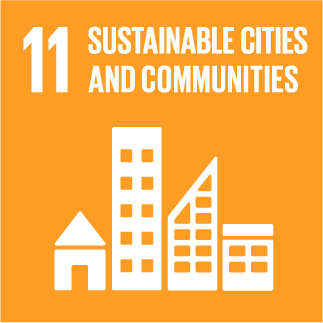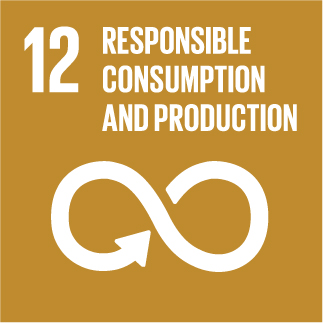Technological watch
Texas A&M researchers develop self-heal, 3D-printable, recyclable elastomers
COLLEGE STATION, Texas—Researchers at Texas A&M University and the U.S. Army Research Laboratory have created a family of synthetic polymers that can be used to build biologically inspired robotic parts for or multicomponent machines.
Ranging in texture from ultra-soft to extremely rigid, the elastomers are 3D-printable, self-healing, recyclable and naturally adhere to each other in air or underwater, the university said.
"We have made an exciting group of materials whose properties can be fine-tuned to get either the softness of rubber or the strength of load-bearing plastics," said Svetlana Sukhishvili, a professor in the department of materials science and engineering and an author on the study.
The 3D printability and the ability to self heal within seconds, make the materials suited for more realistic prosthetics and soft robotics.
Furthermore, the polymers can have broader military applications such as agile platforms for air vehicles and futuristic self-healing aircraft wings, Sukhishvili said.
To develop the new polymers, the focus of the study primarily was on the crosslinks to achieve the desired texture.
"Crosslinks are like stitches in a piece of cloth; the more stitches you have, the stiffer the material gets and vice versa," Sukhishvili said. "But instead of having these 'stitches' be permanent, we wanted to achieve dynamic and reversible crosslinking so that we can create materials that are recyclable."
Turning their attention to the molecules involved in the crosslinking, the researchers "chemically studded" the prepolymer chains with two types of small crosslinking molecules—furan and maleimide.
The team found that by increasing the number of these molecules in the prepolymer, they could create stiffer materials. In this way, the hardest material they created was 1,000 times stronger than the softest. Interestingly, however, the crosslinks are reversible: Furan and maleimide participate in a type of reversible chemical bonding.
"Put simply, in this reaction, furan and maleimide pairs can 'click' and 'unclick' depending on temperature," said the university statement.
When the temperature is high enough, the molecules come apart from the polymer chains and the materials soften.
At room temperature, the materials harden as the molecules "quickly click back together," once again forming crosslinks. As a result, if there is any tear in the materials at ambient temperatures, furan and maleimide automatically re-click, healing the gap within a few seconds.
The researchers noted that the temperatures at which the crosslinkers dissociate—or unclick—from the prepolymer chains are relatively the same for different stiffness levels.
The researchers used this property for 3D printing with these materials. Regardless of whether they are soft or hard, the materials can be melted at the same temperature and then used as printing ink.
"By modifying the hardware and processing parameters in a standard 3D printer, we were able to use our materials to print complex 3D objects layer by layer," said Frank Gardea, research engineer in the U.S. Army Research Laboratory and an author on the study.
"The unique advantage of our materials is that the layers that make up the 3D part can be of vastly different stiffness."
As the 3D part cools to room temperature, he added, the different layers "join seamlessly," thereby avoiding the need for curing or any other chemical processing.
Consequently, the 3D-printed parts can be melted using high heat and then recycled as printing ink.
The researchers also noted that their materials are "reprogrammable," meaning that after being set into one shape, they can be made to change into a different shape using just heat.
In the future, the researchers plan to increase the functionality of the materials by amplifying its properties outlined in the current study.
"Right now, we can easily achieve around 80 percent self-healing at room temperature, but we would like to reach 100 percent. Also, we want to make our materials responsive to other stimuli other than temperature, like light," said Gardea.
"Further down the road, we'd like to explore introducing some low-level intelligence so that these materials know to autonomously adapt without needing a user to initiate the process," he concluded.
Ranging in texture from ultra-soft to extremely rigid, the elastomers are 3D-printable, self-healing, recyclable and naturally adhere to each other in air or underwater, the university said.
"We have made an exciting group of materials whose properties can be fine-tuned to get either the softness of rubber or the strength of load-bearing plastics," said Svetlana Sukhishvili, a professor in the department of materials science and engineering and an author on the study.
The 3D printability and the ability to self heal within seconds, make the materials suited for more realistic prosthetics and soft robotics.
Furthermore, the polymers can have broader military applications such as agile platforms for air vehicles and futuristic self-healing aircraft wings, Sukhishvili said.
To develop the new polymers, the focus of the study primarily was on the crosslinks to achieve the desired texture.
"Crosslinks are like stitches in a piece of cloth; the more stitches you have, the stiffer the material gets and vice versa," Sukhishvili said. "But instead of having these 'stitches' be permanent, we wanted to achieve dynamic and reversible crosslinking so that we can create materials that are recyclable."
Turning their attention to the molecules involved in the crosslinking, the researchers "chemically studded" the prepolymer chains with two types of small crosslinking molecules—furan and maleimide.
The team found that by increasing the number of these molecules in the prepolymer, they could create stiffer materials. In this way, the hardest material they created was 1,000 times stronger than the softest. Interestingly, however, the crosslinks are reversible: Furan and maleimide participate in a type of reversible chemical bonding.
"Put simply, in this reaction, furan and maleimide pairs can 'click' and 'unclick' depending on temperature," said the university statement.
When the temperature is high enough, the molecules come apart from the polymer chains and the materials soften.
At room temperature, the materials harden as the molecules "quickly click back together," once again forming crosslinks. As a result, if there is any tear in the materials at ambient temperatures, furan and maleimide automatically re-click, healing the gap within a few seconds.
The researchers noted that the temperatures at which the crosslinkers dissociate—or unclick—from the prepolymer chains are relatively the same for different stiffness levels.
The researchers used this property for 3D printing with these materials. Regardless of whether they are soft or hard, the materials can be melted at the same temperature and then used as printing ink.
"By modifying the hardware and processing parameters in a standard 3D printer, we were able to use our materials to print complex 3D objects layer by layer," said Frank Gardea, research engineer in the U.S. Army Research Laboratory and an author on the study.
"The unique advantage of our materials is that the layers that make up the 3D part can be of vastly different stiffness."
As the 3D part cools to room temperature, he added, the different layers "join seamlessly," thereby avoiding the need for curing or any other chemical processing.
Consequently, the 3D-printed parts can be melted using high heat and then recycled as printing ink.
The researchers also noted that their materials are "reprogrammable," meaning that after being set into one shape, they can be made to change into a different shape using just heat.
In the future, the researchers plan to increase the functionality of the materials by amplifying its properties outlined in the current study.
"Right now, we can easily achieve around 80 percent self-healing at room temperature, but we would like to reach 100 percent. Also, we want to make our materials responsive to other stimuli other than temperature, like light," said Gardea.
"Further down the road, we'd like to explore introducing some low-level intelligence so that these materials know to autonomously adapt without needing a user to initiate the process," he concluded.

This project has been co-funded with the support of the LIFE financial instrument of the European Union [LIFE17 ENV/ES/000438] Life programme
The website reflects only the author's view. The Commission is not responsible for any use thay may be made of the information it contains.Last update: 2022-01-31




